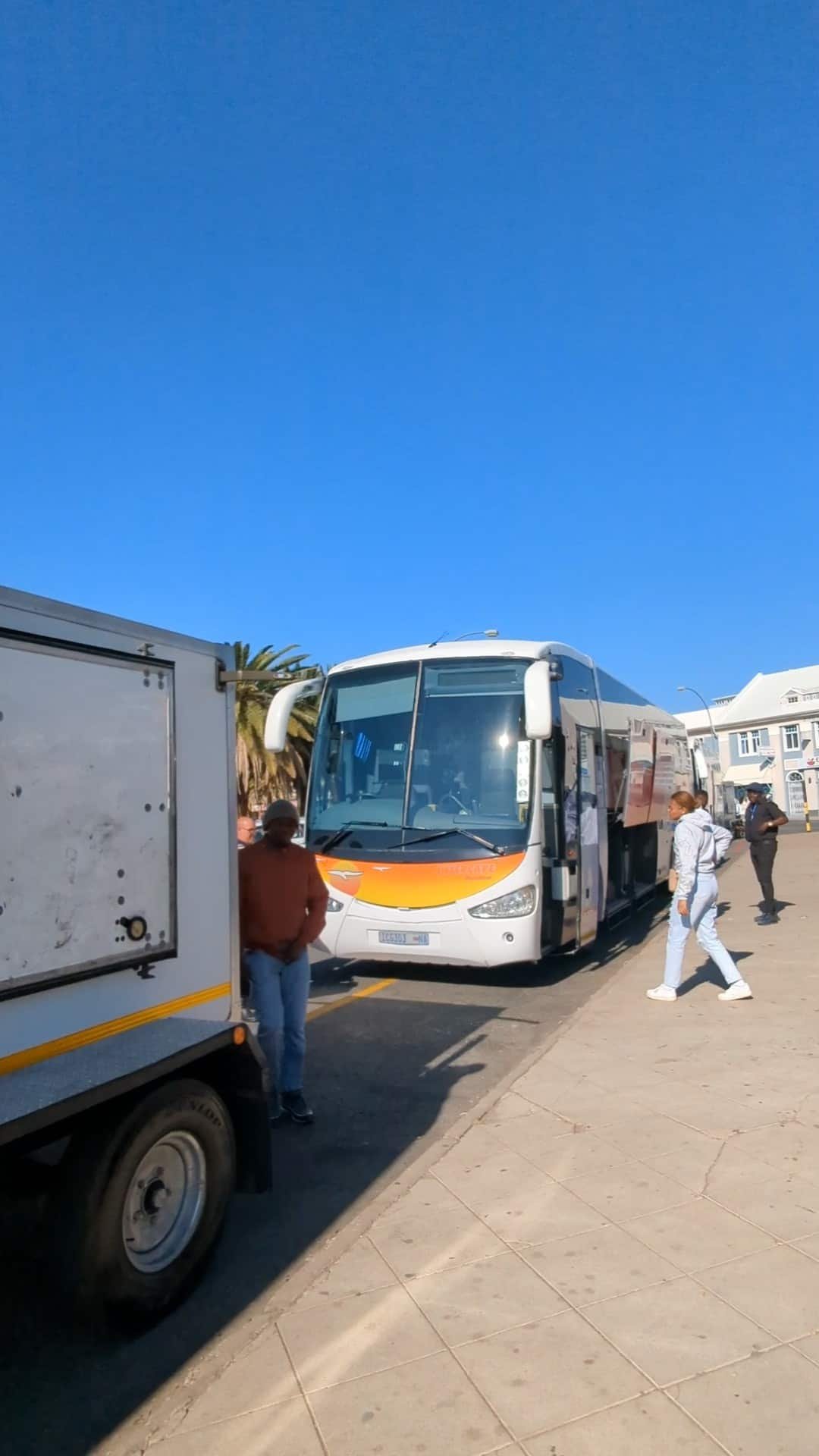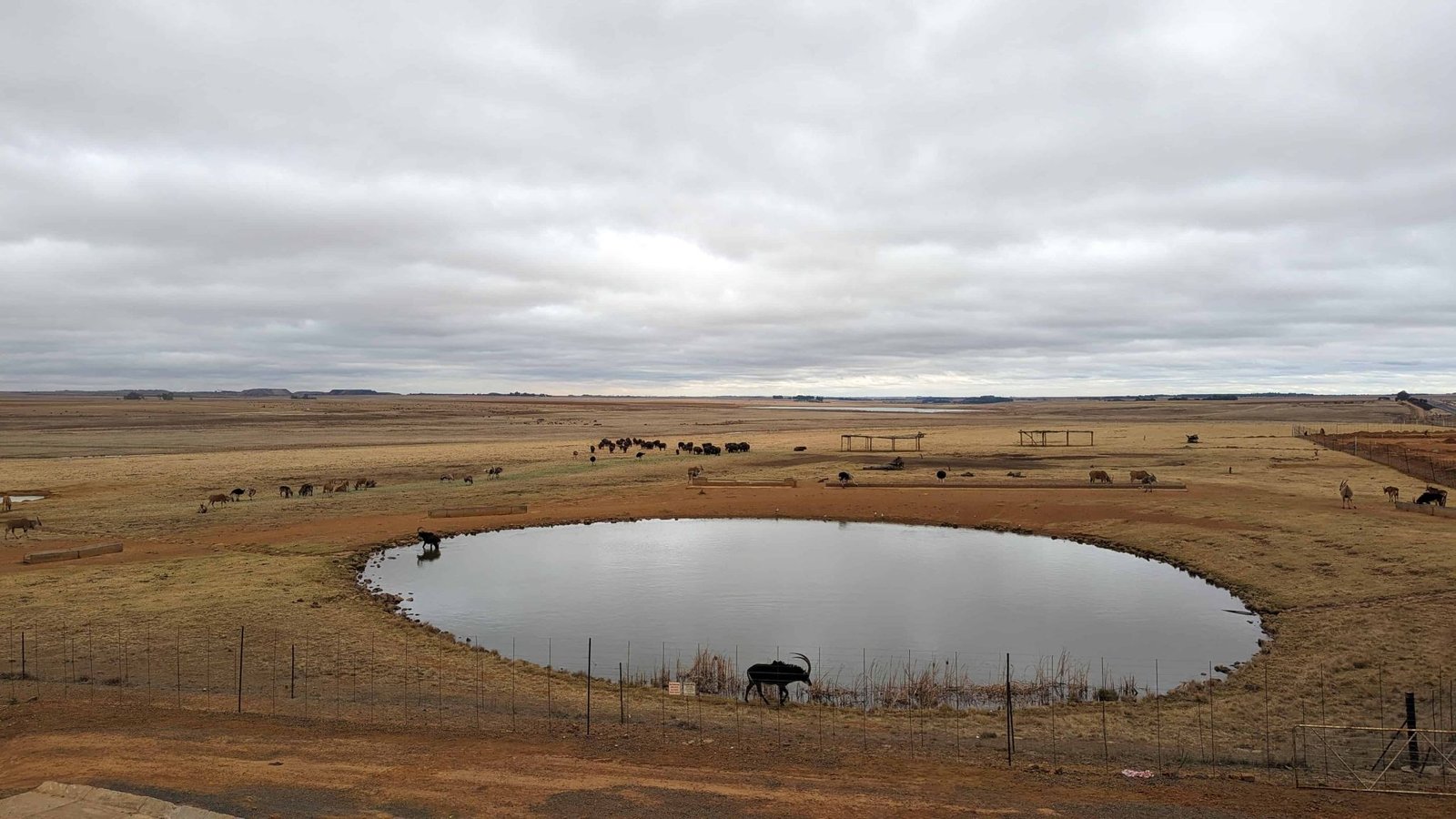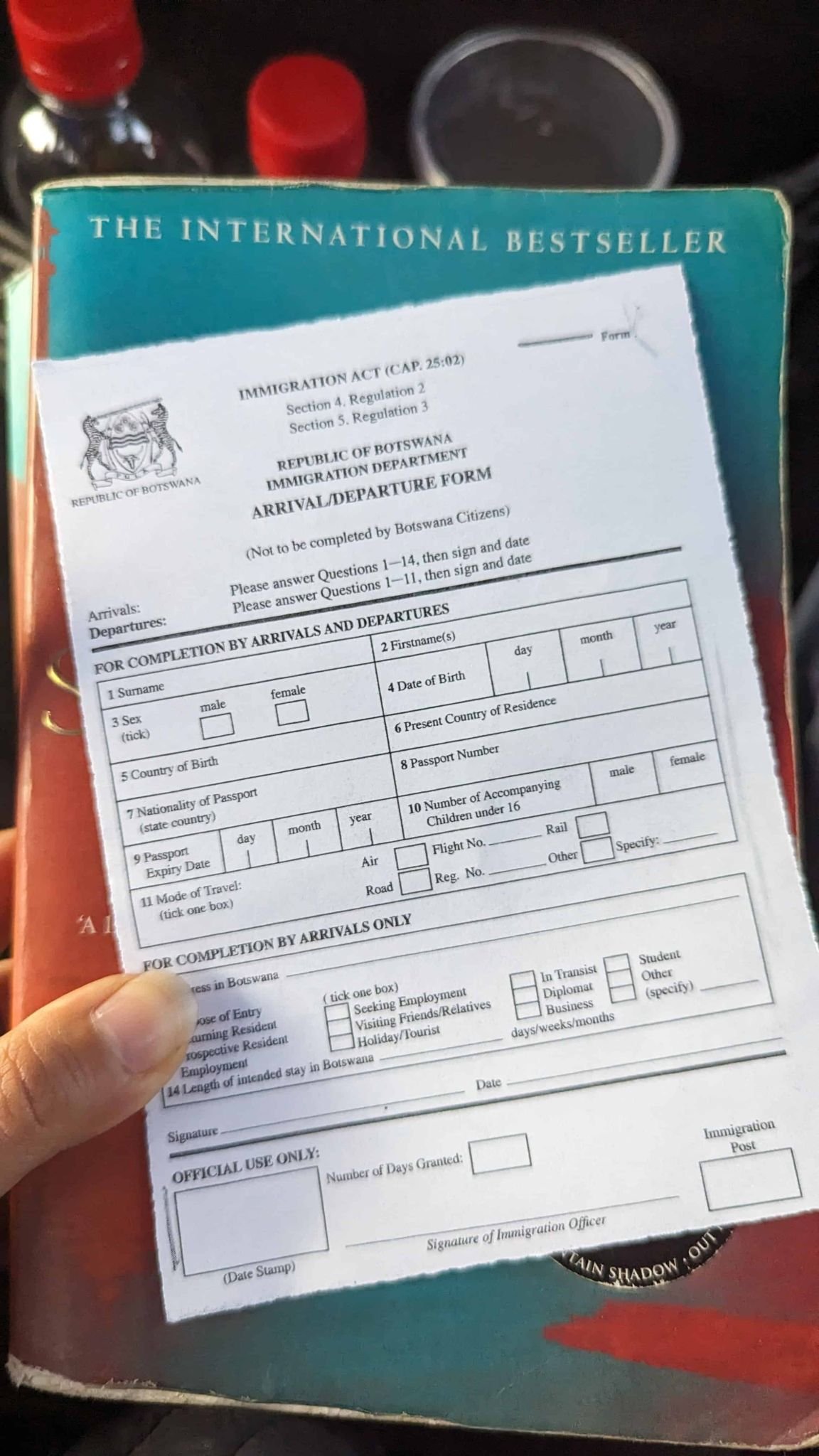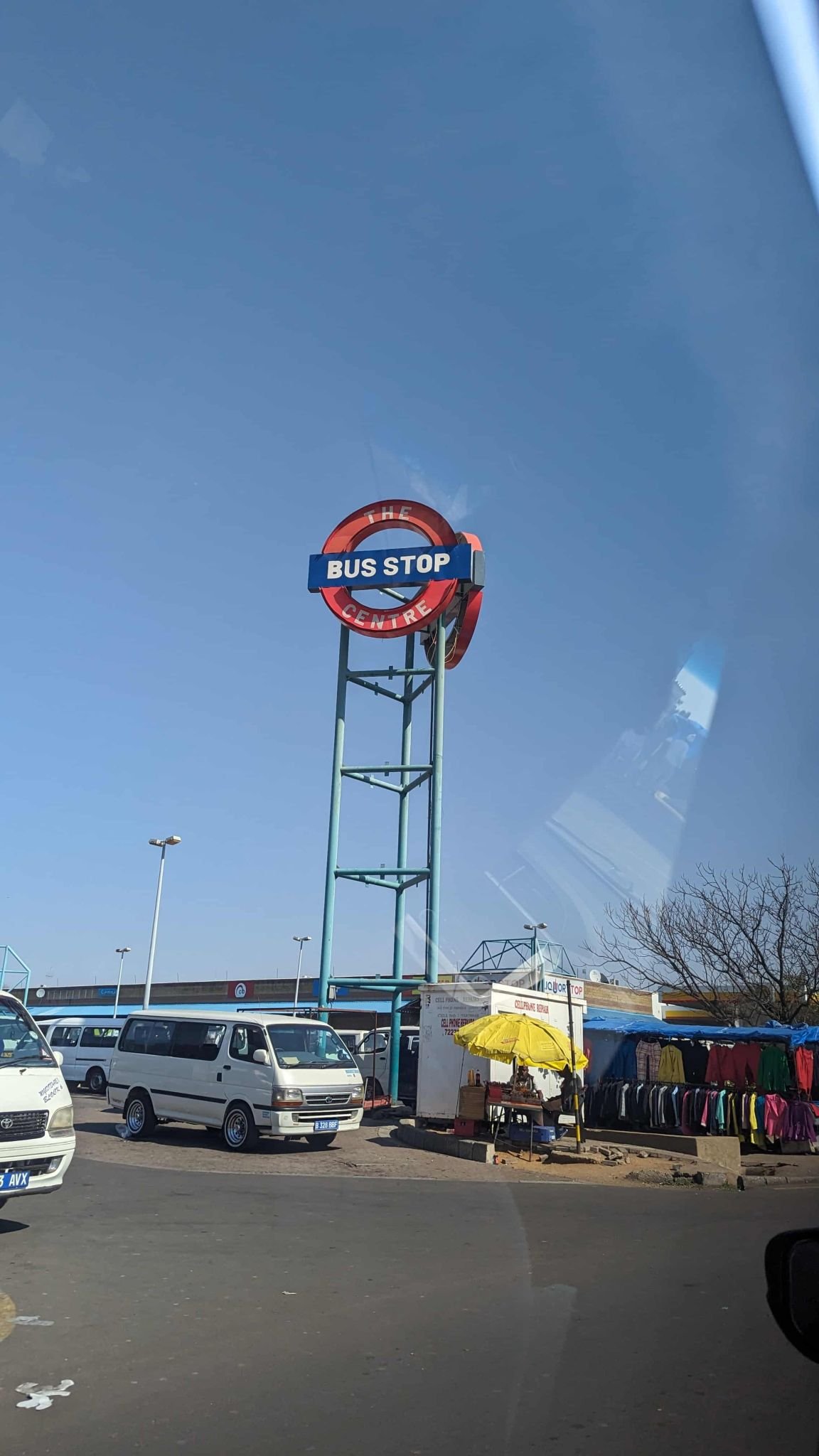NAMIBIA VIA SOUTH AFRICA TO TANZANIA: OVERLANDING AFRICA BY BUS

the ultimate guide for Overlanding africa by bus: from southern to east africa
There is little to no information online about how to travel by land in Africa, especially using public transportation. I went on a 3-month adventure spanning 9 countries covering 15,000 kilometers from Namibia to East Africa. I spent a bit over $5000 USD over 3 months. A one-week safari usually costs a few thousand. In this guide, I’ll break down our itinerary and how to get from one country to the next. Overlanding Africa by bus is not only possible. It’s safe. It keeps you away from tourists. It is one of the best ways to authentically travel through the region.
Here is the list of countries we traveled through:
- Namibia
- South Africa
- Lesotho
- eSwatini (Swaziland)
- Botswana
- Zambia
- Zimbabwe
- Malawi
- Tanzania

Namibia
I was in Namibia on my own the first month of my trip. It’s difficult to move around the country unless you’re sticking to the main cities. I first went on a roadtrip with strangers, then spent the rest of the time on my own visiting different cities. You can watch videos of my experience here. We explored most of the southern part of Namibia and this was our itinerary.
You can take local buses from the main stations in each city. They’re safe but slow. If you’re looking for convenience, you can pay a bit extra and use services like Carlo’s Shuttle. There is a main meeting point for each city but you will be dropped off at your accommodation. I paid N$300 for a one-way ticket to Swakopmund from Windhoek. If you have your return date it’s N$550 if you’d like to save a bit.
You can simply text them via WhatsApp and pay in cash. They’re very responsive. They offer services to Swakopmund, Aus, Lüderitz, Walvis Bay and Oranjemund.
From Namibia to South Africa
I looked for car sharing services, and inDrive is great but rarely has international rides. I suggest taking the InterCape from Windhoek to Cape Town. They also have bus routes to the eastern part of the country.
- InterCape buses operate 2-3 times a week, offering Sleepliner services. The earlier you book, the cheaper it will be. It’s also sold out quickly. Tickets were starting from N$790 when I booked it. If you want a refundable ticket the price is higher.
- If you would like to reserve a seat, book the tickets at their office. You can book it online but the website is not great for card payments. South African bank cards work just fine. We had to ask someone to buy the tickets for us.

How long is the bus ride from Windhoek to Cape Town?
- It’s a 22-hour ride, and it’s very punctual. I’ve taken multiple sleeper buses throughout my life and this one was very comfortable.
- It got really hot when the AC was off and it was freezing when it was on. Most people had blankets with them. So did I and it was worth it. You might also have to wait outside while all of your passports get checked and stamped. Plan accordingly.
- If you book it early enough, pick the two front seats on the left-hand side of the bus. You can thank me later.
- You will be dropped off right at the city center. You can walk to your accommodation if you are staying in the CBD or take an Uber.
Cape Town
Uber rides can be as low as $2 USD per ride. You can take buses but they take a long time to get around town. Ask your accommodation if it’s safe to walk around your area. We were warned by locals not to walk around at night, only if the distance is less than a 5 minute walk. We took an Uber to get to other parts of town, including Boulders Beach. That was about an hour away and the ride was only $12 USD. From here on I was joined by Ben, another nomad and content creator, and we were able to split the costs while traveling.

Cape Town to Bloemfontein
It’s a 13-hour ride. Book a Sleepliner. We left in the late afternoon and arrived first thing in the morning in Bloemfontein. You can also use Greyhound if you want more options. Just in case, Greyhound in South Africa is a reputable and safe bus company. If you’re from the US and reading this, it has nothing to do with the American Greyhound. We couchsurfed in Bloemfontein and only used it as a base to get to our next country. You can use Ubers to get around the city but there is not much to do.
Bloemfontein to Lesotho
We paid 150 ZAR for the bus ticket. Show up early in the morning, and walk over to the ticket counter inside of the bus station. You’ll be asked for your passports. Make sure to get a receipt. Then you have to walk to the bus rank that says Maseru. You’ll have to wait until the bus gets full. We showed up around 7 am and left around 9 am. The bus is 4 hours long and drops you off right at the border.

Lesotho
You can stay in Maseru and use local taxis for the equivalent of 50 ZAR. We were warned by locals everywhere not to talk around the capital after it starts getting dark. You can use Maseru as a base, although roads are in pretty bad shape so I would just leave the capital for a few days, ideally.
I’ve seen most people go in through Durban via Sani Pass, stay the day, then leave. What a waste. Lesotho is by far one of the most underrated countries I have ever been to. I highly suggest you hire Keketso if you happen to be there. He’s a local professional guide that loves his country and knows all of the hidden gems. He’ll adapt to all budgets, whether you want to hitchhike or bring your own car, everything is possible.
How long should you stay in Lesotho?
We stayed 5 days and barely scratched the surface. You can watch my Lesotho vlog here. We rented a car for 2 days, and the rest of the time used local taxis to get around and keep costs down. These were around the equivalent of 100 ZAR per ride for 3 people. Keep South African Rand on you. We ran out, tried tipping some people with USD, and they wouldn’t take it. The ZAR is king here.

How to go from Maseru, Lesotho to Johannesburg
Cross the border back into South Africa on foot and ask around for the bus going to Johannesburg at the bus rank. We had to wait a few hours for the bus to get full. This was 350 ZAR one way and took 7 hours. The roads are in TERRIBLE shape. Take anti-motion sickness pills if you need any beforehand.
We were dropped off in the CBD of Johannesburg and it was by far the biggest mistake of our trip. Extremely sketchy. We could have been robbed. We had to wait 15 minutes to get an Uber and that was extremely nerve-wracking. Ask the driver to drop you off outside of CBD, or make sure your Uber is there waiting for you by the time you arrive.
Johannesburg to eSwatini/Swaziland
Since we didn’t want to wait at the JoBurg bus rank we took the Transmagnific into the country. It was 750 ZAR, probably double of what we would have paid in the regular bus. Excellent service, it has drop offs in several parts of the country and it includes snacks too. They also have a stop at the Joburg airport, making it really convenient if you’re just flying in. It also stops at the Anzula station which was by far the coolest gas station I’ve ever been to.
You’ll have to call to confirm your booking, even if you have already filled out Transmagnific’s form. You can pay cash in person if the online payment system doesn’t work. It didn’t work for us. The bus back to Joburg is meant to stop at other towns on the way back but it’s often canceled. On the way back I suggest getting to Mbabane and taking the bus from there. It was also the same price: 750 ZAR.

Johannesburg to Gaborone, Botswana
You can take the bus to Gaborone, the capital of Botswana, from the main bus station building. Walk all the way to the back of the building and go down the escalator. You’ll be able to find the ticket office and the bus there. The bus was 380 ZAR and we used Intercape again. It was a very smooth ride and everyone waited for each other while crossing the border. Make sure you memorize the driver’s face, as well as some other passengers’ to make sure you’re not left behind.
How is the bus from johannesburg to gaborone?
We left at 1 pm and arrived by 7 pm. It was punctual. This was the first of many borders where we were asked to clean all of our shoes to avoid cross contamination while crossing borders. Have your shoes within easy access to avoid having to unpack then pack again. You’ll be dropped off at a gas station in the city center where there are ATMs available. They’ll take Pula or Rand.
Expect to pay 50-100 Pula to get from the gas station to your accommodation. To get around town, 40-100 Pula per ride is reasonable. You can also talk to a driver, get their number, and ask them to be your designated ride around the city. We paid him in cash and he was happy to make some extra money. This was how we lowered our transportation costs around Gaborone.

How to go from Gaborone to Maun
You MUST buy the ticket from the bus rank the day you’re traveling. You can’t do it before, and it sells out quickly. Take a taxi there, buy the ticket in the morning, then come back later in the day. The office opens at 9 am and the latest you can buy the tickets is 5 pm. There are several companies running the same route. We took MKK because it looked like the most modern one. It was 305 Pula and it took 10 hours. The bus leaves at 7:30 pm and arrives around 6 am.
It was an intense bus ride with tiny seats and barely any stops. There was ONE toilet break the whole time, and this is the same break where you can get food. Plan accordingly and expect a sleepless night.
Around Maun
There are fixed prices for taxis. There is no need to get ripped off, although someone might try to charge you more. If you use a shared taxi (the most common transportation mode in Maun, we took several of these throughout our stay) the price is 16 Pula per person. If you decide to take the whole taxi it’s 50 Pula per ride.

How to go from Maun to Kasane
There is an overnight bus to Kasane that supposedly runs every 2-3 days but we asked around, even at the station, and no one was sure about it. It seems like the pandemic affected that route. We took the long route instead.
We first took a bus first thing in the morning to Nata. That was 106 Pula. As usual, we had to wait for the bus to get full. This was 4 hours long. In Nata, you get off at a gas station. Right in that gas station you’ll be able to catch the bus to Kasane. Make sure to buy food and use the toilet before jumping on to the next bus. The bus from Nata to Kasane was also 4 hours long and cost 102 Pula. Kasane also has fixed prices for taxis. Pay 8 Pula per person for a shared taxi and 50 for a private ride.
How to go from Kasane to Livingstone
Take a taxi to the Kazungula border. This should be 50 Pula. You can then walk across the bridge. It’s 1.5 km. There are door to door services from Kasane to Livingstone if you don’t want to do it yourself. This is around $20+ USD per person.
All of your stamps will be done on the Zambian side, not Botswana. It’s a one-stop border. They will ask about your health but vaccination cards are no longer required. You can take a taxi from the border to the taxi rank to save money. This was 50 Kwacha. From the taxi rank to Livingstone city center we paid 80 Kwacha each in a shared taxi.
part 1 of the journey
If I were to keep this article in one page, it would be over 10 pages long. This is why I’ve decided to divide it into two. For the rest of the journey, from Zambia to Tanzania, please have a read through this blog post here. I hope this information was useful. Like I mentioned before, none of this is mentioned online. The prices and times will vary, but this should be a good guide to get a better footing in the region and travel confidently around it. We were practically the only foreigners in more than 90% of the rides we took. It was such a beautiful and authentic experience.

Hey there, and welcome to Go Global with Sibu! I’m a global citizen that has been living and traveling around the world since 2005 – all through budget travel, scholarships, study/work and living abroad opportunities. I share everything I’ve learned over the years here – to prove to you that you don’t need money or privilege to enjoy everything that this world has to offer.